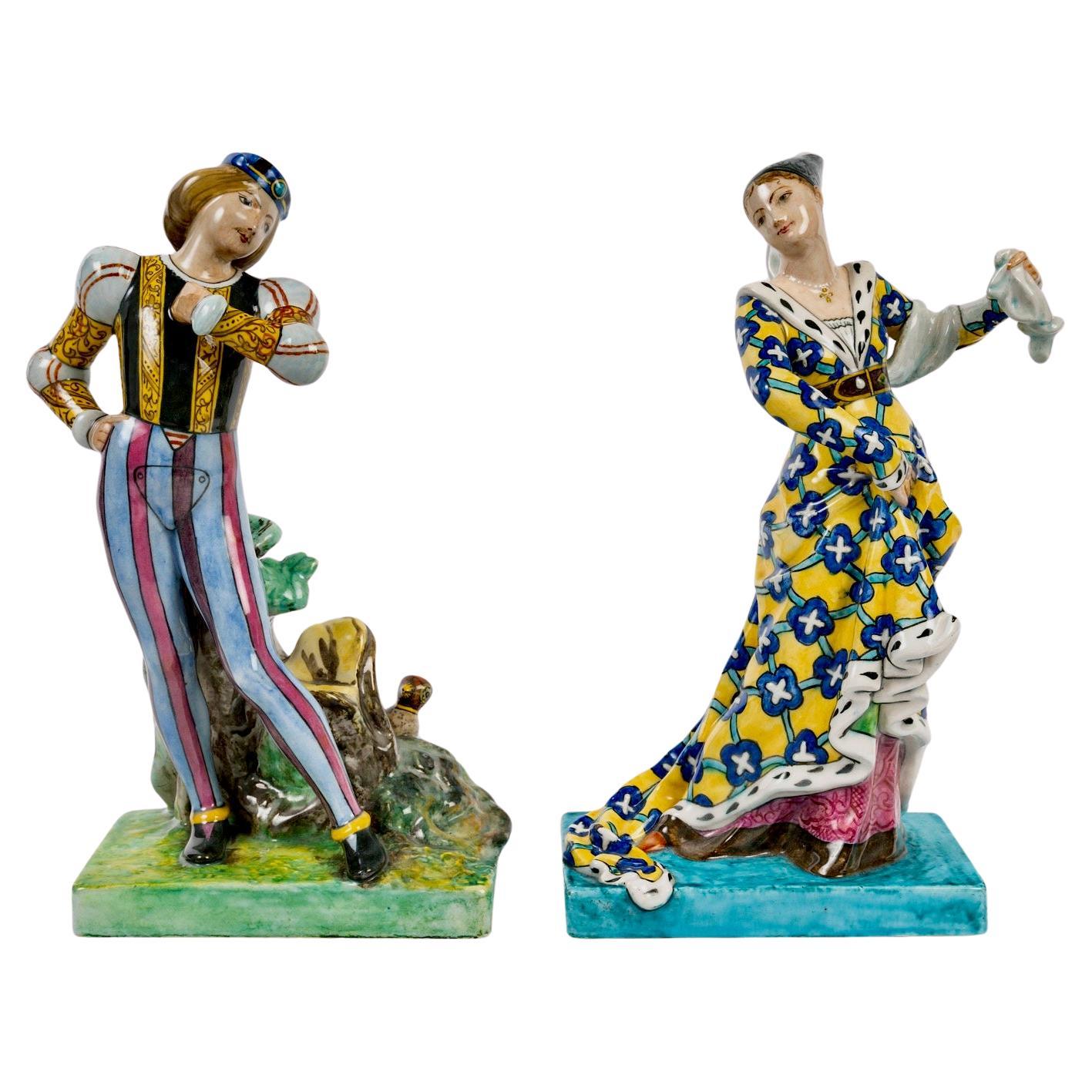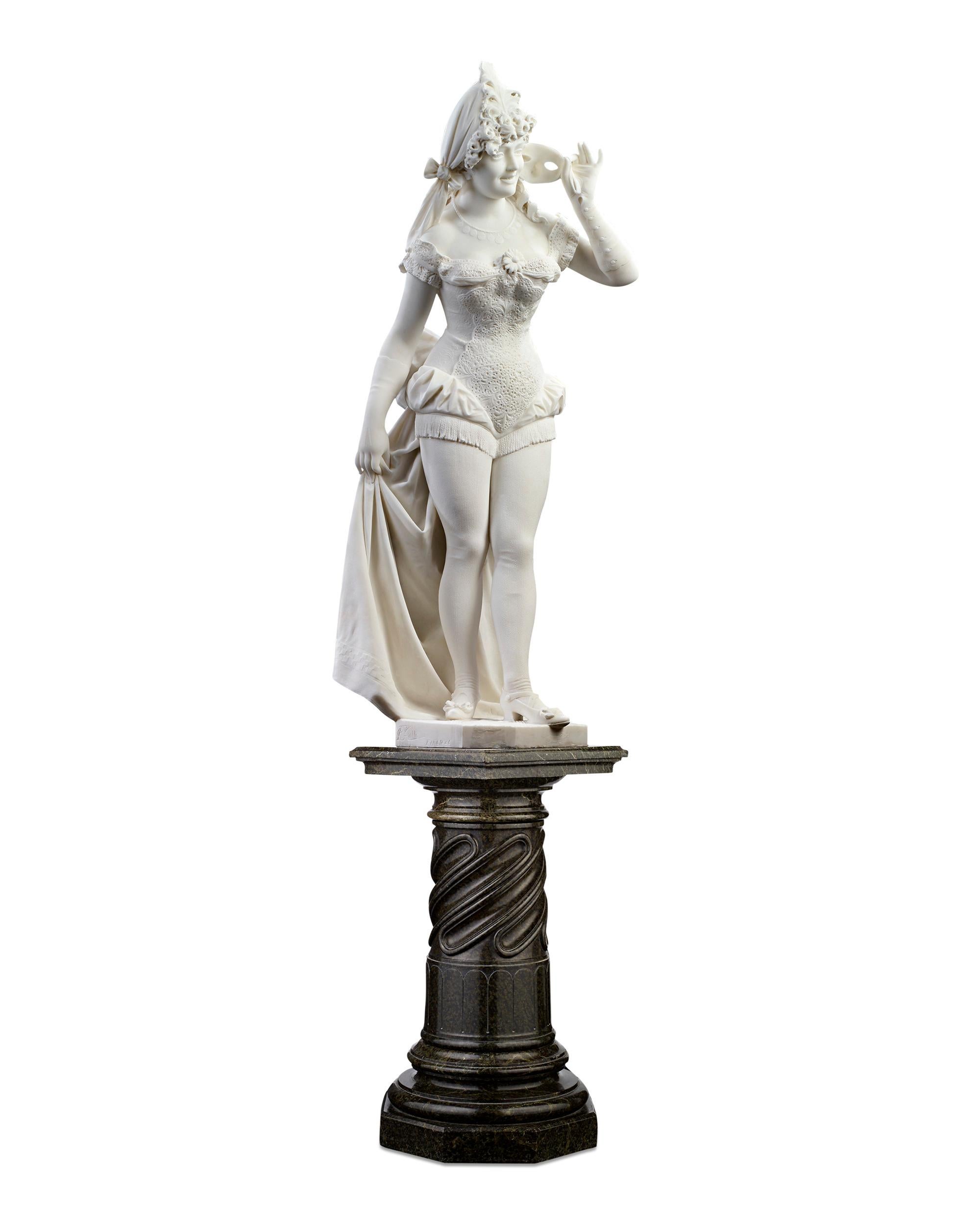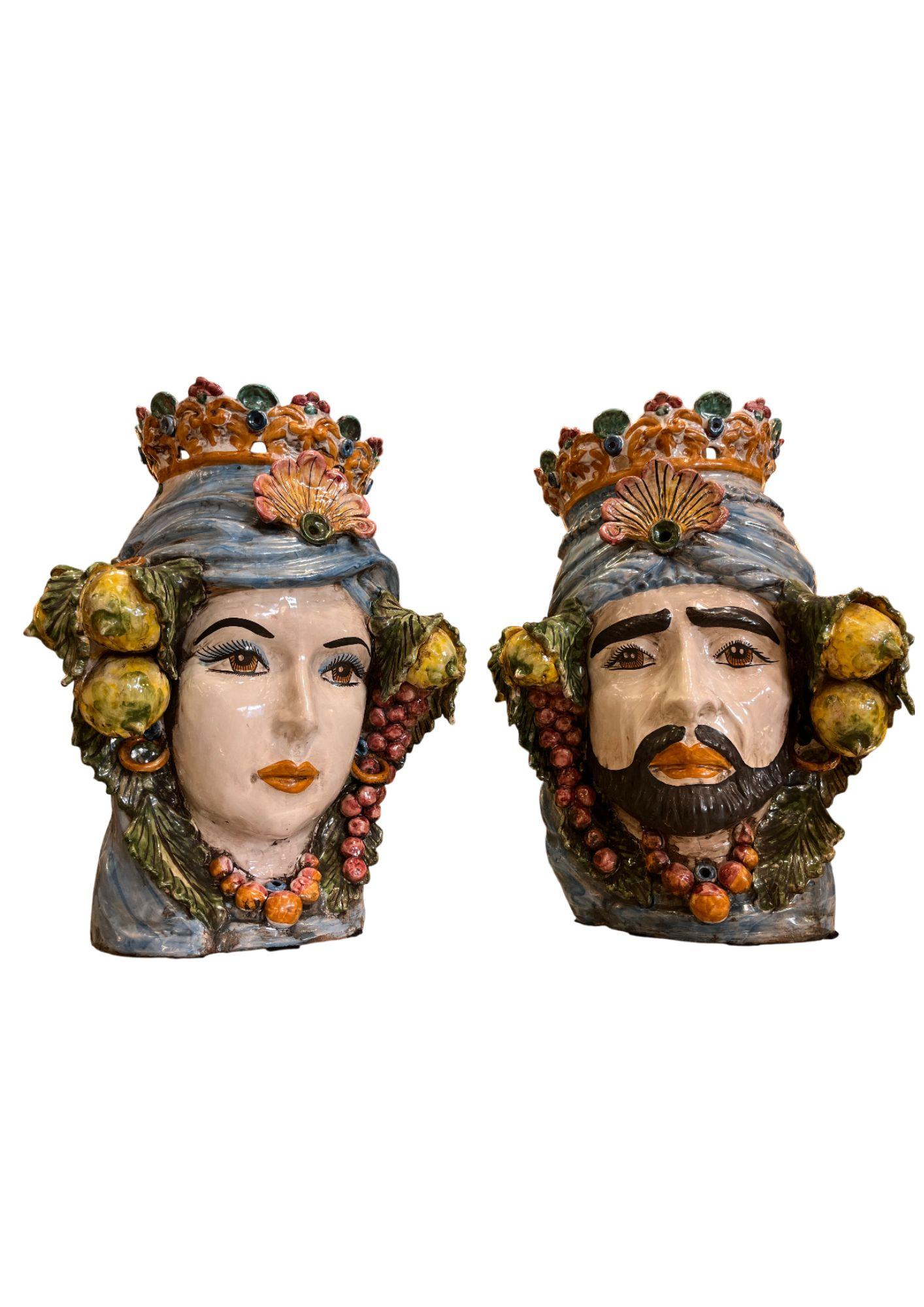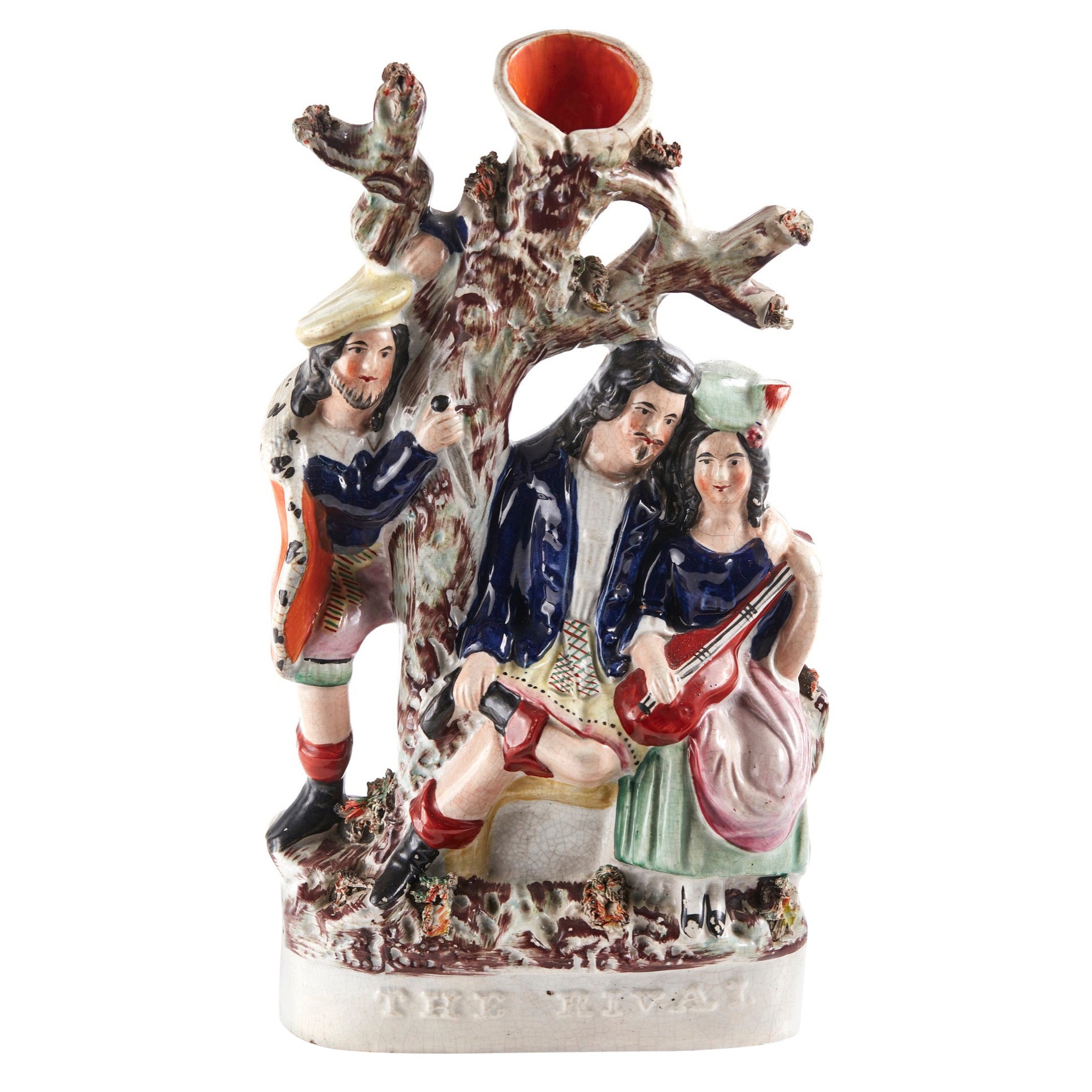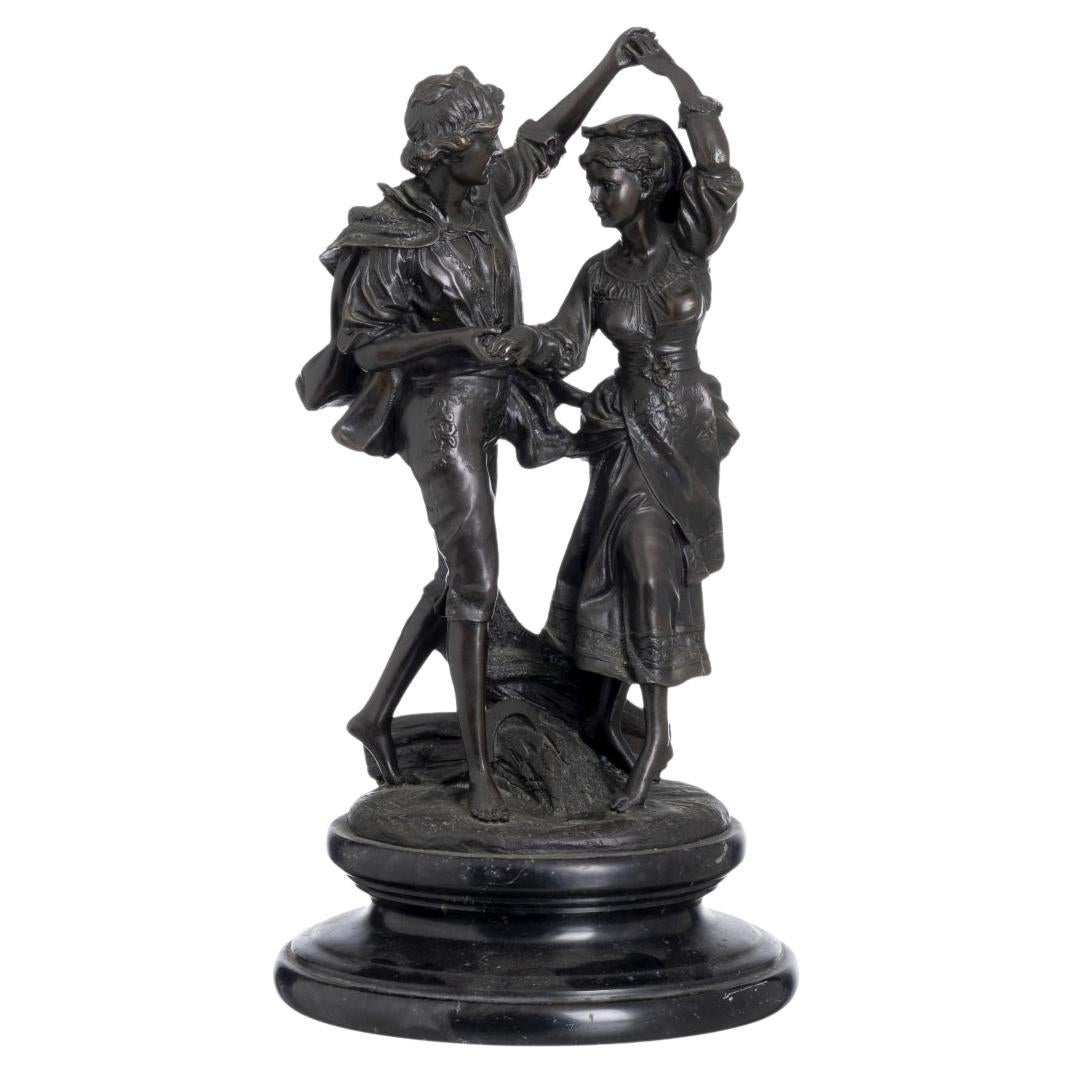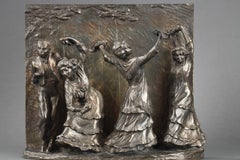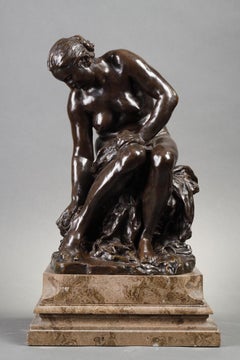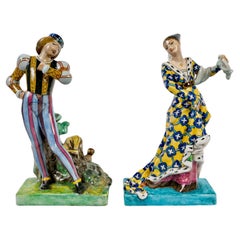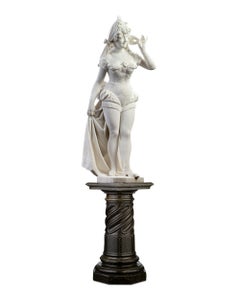Want more images or videos?
Request additional images or videos from the seller
1 of 20
Theodore DeckCourtly Lovecirca 1880
circa 1880
$28,880.32
£21,381.63
€24,000
CA$39,986.83
A$43,656.04
CHF 22,887.08
MX$530,219.45
NOK 285,822.33
SEK 269,892.49
DKK 182,717.13
About the Item
"Courtly Love"
by Théodore Deck (1823-1891)
Rare pair of figurines representing two lovers in the Middle Ages
Polychrome glazed ceramic
Each stamped "Th.Deck" on the underside
France
circa 1880
each : height 31,5 cm / width of the base 17 x 12 cm
Biography :
Théodore Deck (1823-1891) was a French ceramist born in Guebwiller in Alsace. He is passionate about chemistry and physics. In 1841 he was apprenticed to the master stove fitter Hugelin father in Strasbourg. In two years, it learned of the legacy of the sixteenth century methods, such as inlay colored pastes in the manner of Saint-Porchaire. This learning does not stop him to occupy his free time drawing or modeling clay in the studio of sculptor André Friederich. Escaping military service, he toured Germany as it is traditional in-Stove Fitting potters Alsatian companions. The quality of his work allows him to get large orders in Austria for the castles of the provinces and the imperial palaces, including the palace of Schönbrunn. He moves on to Hungary Pest Prague, then back north through Dresden, Leipzig, Berlin and Hamburg. With his learning, he arrived in Paris in 1847. Recommended by Hugelin it comes to stoves factory Bavarian potter Vogt, located rue de la Roquette. The Revolution of 1848 interrupted production and Deck decides to return to his hometown. His family advised her to start a small workshop terracotta: there realizes some busts, statuettes, vases, lamps and famous ancient copies. Aware that this situation does not allow him to properly meet his needs, he returned to Paris in 1851 where he is employed by the Dumas widow, daughter of the potter Vogt for which he had worked. Hired as a foreman, it provides designs for the workers, while working the land itself.
The following year, he decided to settle near his former employer at 20, rue de la Fontaine au Roi, probably using their ovens. His brother Xavier Deck, joined him. It's officially in 1858 as Deck brothers create their business and moved to Paris at 46 Boulevard Saint-Jacques. At first, the brothers realize that pans coatings. But the business works so well that barely a year after installation they want to diversify their production and get into the ceramic coating of buildings and in the form of coins. Deck is interested in politics. In 1870, he opted for French nationality. Sympathizer of the Radical Party, he was elected deputy mayor in the 15th arrondissement of Paris.
In 1861, at the Salon des Arts and Paris Industry held on the Champs Elysees, Théodore Deck exhibited for the first time his achievements: these pieces with inlay decoration called "Henry II" and other parts covered with a turquoise blue enamel or decoration in the style of Iznik ceramics. If he wins a silver medal, critics are however mixed. The following year, on the occasion of the Universal Exhibition of 1862 in London, he conquers the English customers. It surprises by presenting as the previous year's Alhambra vase of exceptional dimensions (1.36 m high and 2.25 m in circumference) that is purchased by the South Kensington Museum a few years later. At the same exhibition is however noticed the many cracks in the glaze and poor adhesion to the dough. At the Exhibition of Industrial Arts in 1864 Deck manages to present parts not covered with cracked transparent enamels.
Théodore Deck explain the manufacture and properties of these transparent enamels in 1887 when publishing his treatise The earthenware. A year later, he made the first tests in reliefs transparent enamels. He will never abandon this technique which will also be taken up by many large factories. Drawing up pastiche of Islamic ceramics, Egyptian, Chinese, Japanese or majolica, it evolved characters, birds, flowers, ornaments of all kinds in a turquoise glaze, green, yellow or manganese. It is mainly a characteristic blue that the public retains of this technique: a brilliant turquoise shade it adopts immediately under the name Blue Deck or Blue Deck.
Théodore Deck string of innovations. On the occasion of the Universal Exhibition of 1867, the factory receives a silver medal thanks, among others, with metallic reflections he gets on some parts. If these exhibitions become the engine of these technical advances, they nevertheless represent considerable expense.
In 1869, Theodore Deck opens Halevy Street retail store in the Paris Opera district , the direction is provided by his sister.
On the occasion of the World Expo 1873 in Vienna, it has a spectacular garden of two meters wide, backed by a panel of nearly four meters high. All preserved in Geneva Ariana Museum, was made on drawings by Emile-Auguste Reiber.
Théodore Deck was appointed in 1875 to head the Development Committee of the Manufacture de Sèvres. Upon installation, Deck brothers meet in their artist friends and implement a principle of collaboration. Following this principle, Deck realizes plates, tiles or plates (rarely vases) that gives paint artists who for many already proven at the show. The sales gains are divided into two fair shares. Deck also trains apprentices who will in turn school. The most famous of them, Edmond Lachenal, will continue the work of the great ceramist developing his art in the spirit of Art Nouveau. Author of a magisterial treatise on earthenware, he became in 1887 - Supreme recognition - director of the Manufacture Nationale de Sèvres and leaves his brother Xavier, Richard and his nephew, the direction of their company. There will perform soft porcelain and improving production technology, manage to give their grandiose dimensions, covering its celadon glazes and turquoise.
Théodore Deck based since 1891 in Paris at the Montparnasse cemetery. It was his friend Auguste Bartholdi who created the monument engraved with the phrase: "He snatched the fire in heaven." The workshops will close Deck few years after his death.
Gallery Tourbillon, antiques, antique dealer, sculptures, bronzes, Paris
- Creator:Theodore Deck (1820 - 1891, American)
- Creation Year:circa 1880
- Dimensions:Height: 12.41 in (31.5 cm)Width: 6.7 in (17 cm)Depth: 4.73 in (12 cm)
- Medium:
- Movement & Style:
- Period:
- Condition:
- Gallery Location:PARIS, FR
- Reference Number:Seller: N.7775-61stDibs: LU2514216529132
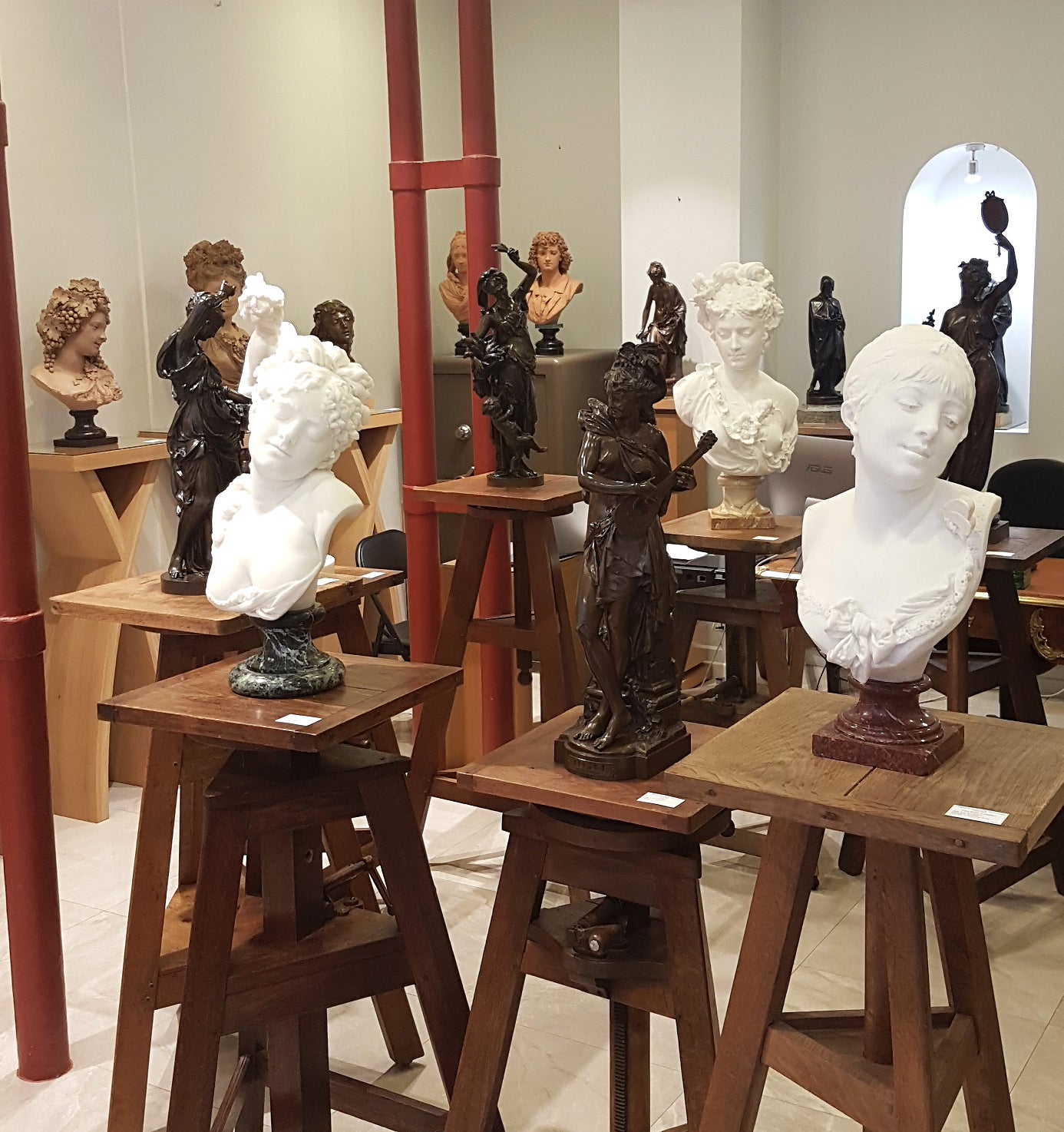
About the Seller
5.0
Recognized Seller
These prestigious sellers are industry leaders and represent the highest echelon for item quality and design.
Established in 1992
1stDibs seller since 2023
10 sales on 1stDibs
Typical response time: 9 hours
- ShippingRetrieving quote...Shipping from: PARIS, France
- Return Policy
Authenticity Guarantee
In the unlikely event there’s an issue with an item’s authenticity, contact us within 1 year for a full refund. DetailsMoney-Back Guarantee
If your item is not as described, is damaged in transit, or does not arrive, contact us within 7 days for a full refund. Details24-Hour Cancellation
You have a 24-hour grace period in which to reconsider your purchase, with no questions asked.Vetted Professional Sellers
Our world-class sellers must adhere to strict standards for service and quality, maintaining the integrity of our listings.Price-Match Guarantee
If you find that a seller listed the same item for a lower price elsewhere, we’ll match it.Trusted Global Delivery
Our best-in-class carrier network provides specialized shipping options worldwide, including custom delivery.More From This Seller
View AllThe Comedy
Located in PARIS, FR
Pierre-Marie POISSON (1876-1953)
The Comedy
Bronze sculpture with black patina
signed on the base "P. Poisson"
Cast by Valsuani (with the foundry stamp)
Raised on a stone base
Fra...
Category
1930s French School Figurative Sculptures
Materials
Bronze
La Posada
Located in PARIS, FR
La Posada
by François-Rupert CARABIN (1862-1932)
A bronze group with a silvered patina
Signed on the base "R. Carabin"
Old cast
Numbered "5"
France
circa 1901
height 24 cm
length ...
Category
Early 1900s French School Figurative Sculptures
Materials
Bronze
Suzanne
By Aimé-Jules Dalou
Located in PARIS, FR
Bathing woman drying her right foot
also known as "Suzanne"
by Aimé-Jules DALOU (1838-1902)
A bronze sculpture with a nuanced dark brown patina
Signed on the base " Dalou "
A very...
Category
Early 20th Century French School Figurative Sculptures
Materials
Bronze
Caress of Love
By Albert-Ernest Carrier-Belleuse
Located in PARIS, FR
"Caress of Love"
by Albert-Ernest CARRIER-BELLEUSE (1824-1887)
Bronze group sculpture with a nuanced dark brown patina
Signed on the back "A. Carrier-Belleuse"
Reposing on its orig...
Category
1870s French School Figurative Sculptures
Materials
Bronze
The Song
By Félix Charpentier
Located in PARIS, FR
The Song
by Félix CHARPENTIER (1858-1924)
Bronze sculpture with a very nuanced dark brown patina
Signed on the base " Félix Charpentier "
Cast by "E. Colin & Cie Paris" (foundry ma...
Category
Early 20th Century French School Nude Sculptures
Materials
Bronze
Caress of Love
By Albert-Ernest Carrier-Belleuse
Located in PARIS, FR
"Caress of Love"
by Albert-Ernest CARRIER-BELLEUSE (1824-1887)
Bronze group sculpture with a nuanced dark brown patina
Signed on the back "A. Carrier-Belleuse"
Resting on a revolvi...
Category
1870s French School Figurative Sculptures
Materials
Bronze
You May Also Like
Théodore Deck (1823-1891), Courtly Love, Rare Pair of Faience Figures , c.1860
By Theodore Deck
Located in Saint-Ouen, FR
Théodore Deck (1823-1891)
Courtly Love
Polychrome enamelled earthenware
Pair of subjects representing two lovers in the Middle Ages
Each signed below with the stamp “Th.Deck”
Extr...
Category
Antique 1860s French Renaissance Revival Decorative Art
Materials
Faience
$15,162 Sale Price / set
30% Off
Masquerade
By Fortunato Galli
Located in New Orleans, LA
Masquerade, a traditional yet playful composition by Fortunato Galli, reflects the realism and intricacy that defined Italian sculpture at the end of the 19th century. Magnificently ...
Category
19th Century Other Art Style Figurative Sculptures
Materials
Marble
Tête De Maures
Located in PARIS, FR
Moorish heads decorated in the Sicilian tradition
Category
21st Century and Contemporary Figurative Sculptures
Materials
Ceramic
$3,549
Antique Staffordshire Flatback Figure
Located in Suffolk, GB
Antique 19th century Staffordshire flatback figure. It has wonderful hand painted colours and is in perfect condition.
Measures: H 23
W 15
...
Category
Antique 19th Century English Figurative Sculptures
Materials
Ceramic
$325 Sale Price
20% Off
Jean Didier Debut (1824-1893)
By Jean Didier Debut
Located in Porto, PT
"La Moisson". Bronze sculpture group, set on a marble base. Signed. Height: (total) 47 cm.
Category
Antique 19th Century French Figurative Sculptures
Materials
Bronze
Baroque Faience Statues, Creil et Montereau, Oversized Figurines, 19th Century
By Creil et Montereau
Located in Lisbon, PT
A rare Rococo Revival multicolor earthenware couple by Creil et Montereau dates back to the 19th century. Standing an impressive 53.5 cm tall, each figure— man and woman — is dressed...
Category
Antique 19th Century French Rococo Revival Figurative Sculptures
Materials
Porcelain
$3,332 Sale Price
24% Off
More Ways To Browse
Fontaine Antique
Antique Meter
Exhibition 1862
Bavarian Antique
Henry Ii
The Imperial Palace Of China
Garden China Made In Japan
Sculpture Paris Bronze
19th Century English Green Majolica
Pair Of French Porcelain Birds
Antique Oven
Lamp Porcelain Bird And Flowers
Chinese Porcelain Lamp With Painted Flowers
Saint Jacques
Alhambra Antique
Iznik Antique
Chinese Green Ceramic Vase Pair
Chinese Blue And Celadon Ceramic Vase
